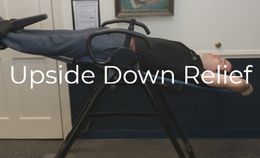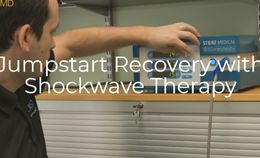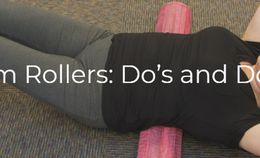Everybody is having a ball with all the new models of yoga balls rolling out (no pun intended). Whether they are used as rolling chairs or for exercise, the yoga ball has displayed multiple uses, such as posture correction or balance training. For those on the recovery and injury prevention route, the BOSU ball is one of the unsung heroes in the gym developed at the turn of the century. You might not know the name, but by sight, the BOSU ball is a semi spherical yoga ball with a flat plastic platform bottom.
BOSU stands for "Both Sides Up," meaning either side can be used in a workout or for therapeutic and strength training work. The shape of the BOSU ball makes it ideal for providing an unstable surface on which to balance or attempt to balance. Balance training has become an important part in training ankle and knee strength through achieving muscle activation in the lower leg and hips.
As examined in a study by Shultz et. al (2015), hamstring activity increased dramatically when a single leg drop exercise was performed on a BOSU ball compared to the ground. This unstable surface changed the co-contractions around the knee. A co-contraction is a contraction of muscles surrounding a joint in order to provide greater stability. So, the neighboring hamstring muscle was activated as a body's natural way of protecting the knee. These findings provided some insight into using unstable surface training, contributing evidence to the plausible use of balance training as a significant method to reduce the risk of ACL injury and decreasing risk of falls for older adults.
One of the special features of the BOSU ball is the benefit of standing on the inflated dome. The non-firm surface gives way, enabling further dorsiflexion, or upward bend, of the ankle. This increased range of motion makes the lower leg muscles work more through eccentric contractions, meaning the lower leg muscles are stretched under a load. As a result, the strength of the muscles are improved through smaller exercises. Short answer: this protects the knee.
Long answer: the unsteady surface enables greater pronation to occur, where the arch of the foot collapses flat. In order to adjust to this change in the base of our body that is our feet, the rest of our body works in compensation patterns in adjusting to the environment which our feet encounter. This activation caused by the collapsible surface comes in the form of glute activation in order to prevent inward rotation of the tibia, thus protecting the knee.
We consistently rely on the BOSU ball for our patients who have ankle problems. The strengthening of muscles around the ankle that comes as a result of balance training helps to prevent further injury, making BOSU an ideal tool for this purpose.
The BOSU ball is a piece of equipment which we trust will help you in your athletic and therapeutic endeavors. If you desire to learn more about using BOSU to prevent an injury or are on the recovery, we at QuistMD are more than ready to help. As always, this would be integrated with our holistic, osteopathic approach to medicine to guide you to greater health.
References:
Lubetzky A.V., Price R, McCoy S.W. 2016. Effects of Achilles tendon vibration, surface and visual conditions on lower leg electromyography in young adults with and without recurrent ankle sprains. J Bodyw Mov Ther. (3):639-49.
Shultz R, Silder A, Malone M, Braun H.J., Dragoo J.L. 2015. Unstable Surface Improves Quadriceps:Hamstring Co-contraction for Anterior Cruciate Ligament Injury Prevention Strategies. Sports Health. 7(2):166-71.
Price, J. (2014, September 1). Alleviating knee pain using the BOSU®. Retrieved from https://www.bosu.com/blog/alleviating-knee-pain-using-the-bosu/
Authored by David Pitts, Jr.





















